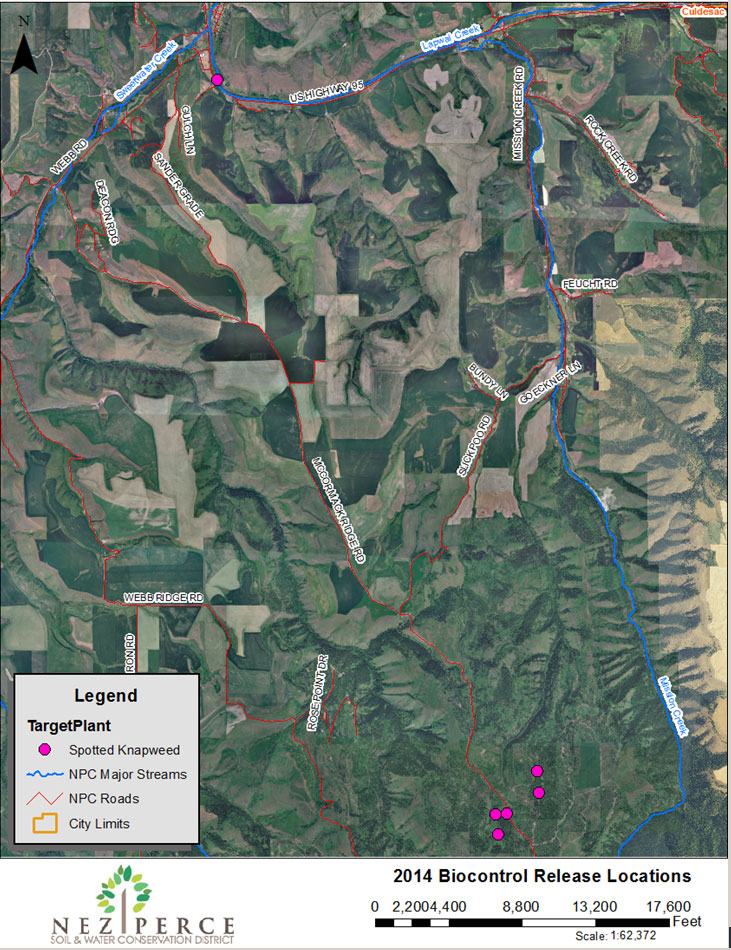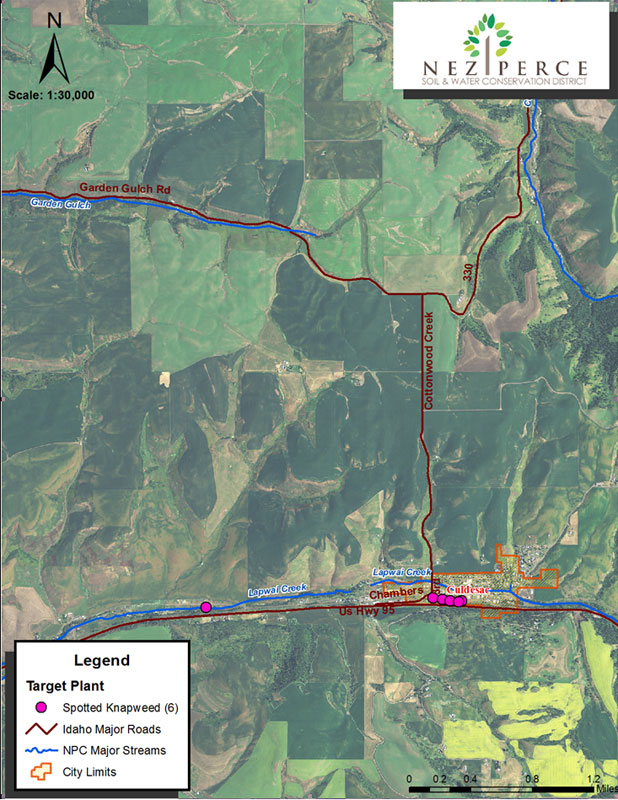Spotted Knapweed is prevalent within Nez Perce County’s rangelands, roadsides, pastures, recreation lands, and cropland.
CONTROL
Since 2004, the District has assisted landowners in releasing bio-control agents to control spotted knapweed. The goal of this effort was to ensure that there was a sufficient population of the insects to provide a sustainable control level.
There are five insects approved for release in the State of Idaho. Of these the District focuses on the release of the knapweed flower weevil, Larinus minutus, and the knapweed root weevil, Cyphocleonus achates, which winters as larvae in the root. The flower weevil females produce between 28 and 130 eggs which are laid in clusters in open flowers. The root weevil winter in the root, where the larvae mine and gall the vascular tissue. Releases follow the United States Department of Agriculture’s Biology and Biological Control of Knapweed protocol.
Partners and Funding
The District works closely with the Nez Perce Bio-Control Center to coordinate release site locations and obtain staff training. In addition, release site locations are transmitted to the Nez Perce Bio-Control Center as part of a regional database.
This project was funded through the Bonneville Power Administration’s Fish and Wildlife program and the Idaho State Department of Agriculture’s Noxious Weed Program. The Bonneville Power Administration provides funding to the District for steelhead habitat restoration. The bio-control releases are a component of the Lapwai Creek restoration plan’s objective of reducing noxious weeds within the watershed. The Idaho State Department of Agriculture’s Noxious Weed program funds are prioritized through the Clearwater Basin Cooperative Weed Management Area.
2014 Activities
4,800 insects were released at eight sites within the county. The 2014 releases are estimated to impact 40 acres of spotted knapweed. Figure 6 illustrates the 2014 release locations.
Bio-Control Summary of Activities - 2014
Figure 6. 2014 Spotted Knapweed Releases.

2013 Activities
1,200 insects were released at six sites within the county. The 2013 releases are estimated to impact 30 acres of spotted knapweed. Figure 4 illustrates the 2013 release locations.
Bio-Control Summary of Activities - 2013
Figure 4. 2013 Spotted Knapweed Releases.
